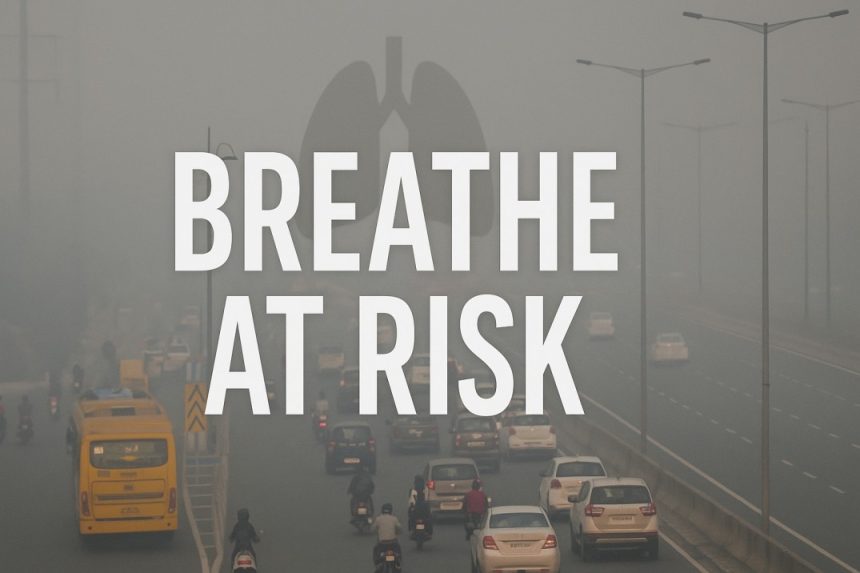By |Arvind Jadhav
New Delhi : Capital and other major Indian cities once again ranked among the top ten worst air-quality locations in the world on October 31, 2025, as pollution levels surged to “severe” and “hazardous” categories. According to the latest data from the Central Pollution Control Board (CPCB), the Air Quality Index (AQI) in the national capital hovered between 460 and 490 across several zones, including Anand Vihar, Jahangirpuri, and Dwarka. Neighboring cities such as Noida, Ghaziabad, Gurugram, and Faridabad also reported AQI levels above 400, indicating an alarming environmental emergency.
A thick layer of toxic haze blanketed much of North India, reducing visibility and raising widespread health concerns. Meteorologists attributed the deteriorating conditions to a combination of post-harvest stubble burning, low wind speeds, and heavy vehicular emissions trapped under temperature inversion. In Punjab and Haryana, satellite images captured more than 2,100 incidents of farm fires in the last 48 hours—a sharp increase compared to the previous week. The dense smog is expected to persist over the coming days unless significant wind movement occurs.
Experts from IIT Kanpur and the Energy and Resources Institute (TERI) have reiterated that the proposed cloud-seeding operation in the Delhi-NCR region is both safe and scientifically designed as an “SOS measure” to temporarily reduce particulate matter levels. Dr. Sachin Ghude of IITM Pune explained that PM2.5 concentrations had reached nearly eight times the safe limit prescribed by the World Health Organization. Environmental scientist Dr. Sunita Narain warned that prolonged exposure to such air could lead to serious respiratory and cardiovascular problems, calling the situation not merely an environmental issue but a public-health emergency.
In response, the Commission for Air Quality Management (CAQM) convened an emergency meeting and directed state governments to implement Stage-IV of the Graded Response Action Plan (GRAP) with immediate effect. This decision includes halting most construction and demolition activities except essential public projects, restricting the use of diesel vehicles, and advising both government and private offices to adopt work-from-home policies if conditions persist. Schools across Delhi may also be closed temporarily if AQI levels remain in the severe range for more than 48 hours. Union Environment Minister Bhupender Yadav reviewed the measures and emphasized the need for joint action between Delhi, Punjab, and Haryana governments to address stubble burning at its source.
Hospitals in the national capital have reported a 25 to 30 percent rise in cases of breathing difficulties, throat irritation, and asthma-related complications, particularly among children and senior citizens. Many outdoor sports events and morning school assemblies have been cancelled, while sales of air purifiers and N95 masks have surged across markets. Citizens have been urged to stay indoors as much as possible and to monitor air-quality readings through official CPCB channels.
Globally, the IQAir World Index listed Delhi, Lahore, and Dhaka among the most polluted cities on October 31. Environmental observers warned that India’s recurring winter smog crisis continues to threaten both public health and national climate goals. Without stronger enforcement, long-term investment in clean technologies, and financial support to farmers for alternative residue management, experts fear the seasonal air crisis could become a year-round reality.






